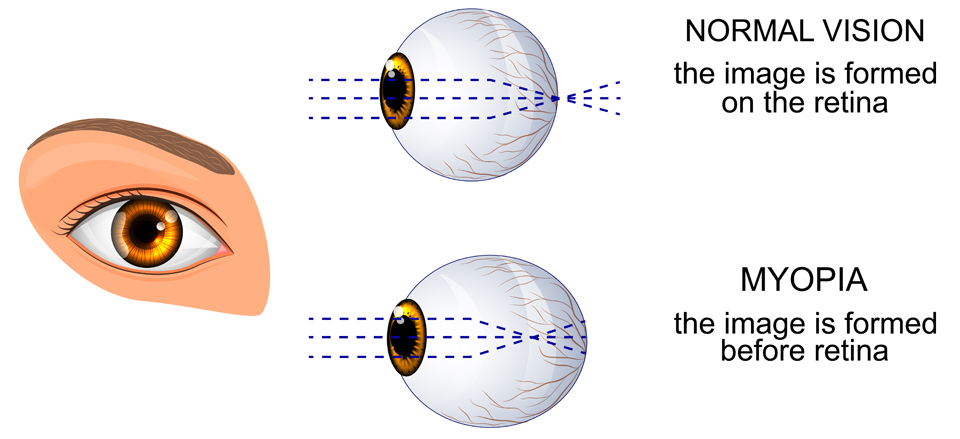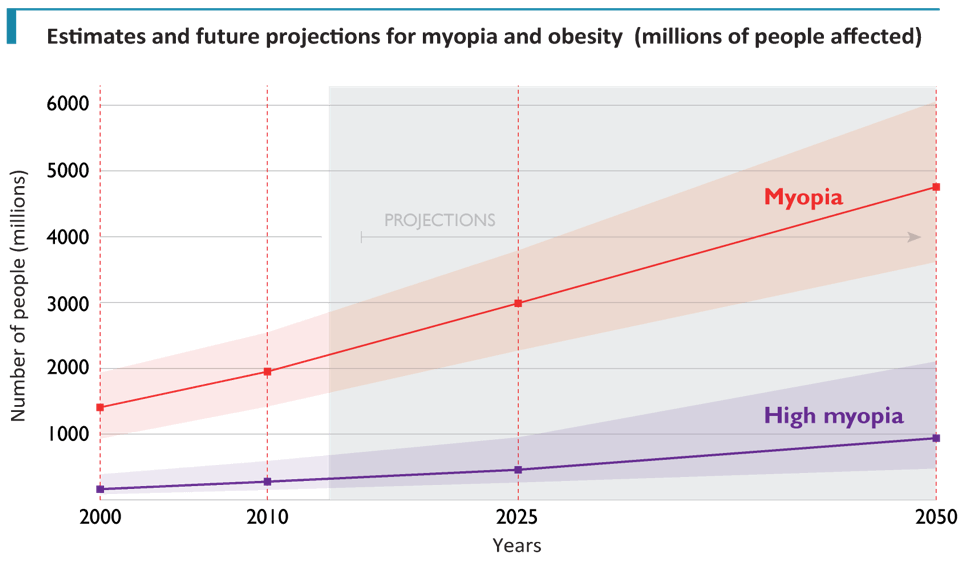MYOPIA CONTROL
WHAT IS MYOPIA?
Myopia occurs when the eye grows too long causing blurred distance vision commonly known as short-sightedness. It is the fastest spreading condition in the world.

Just 60-80 years ago, only 10–20% of the Asian population was short-sighted, but today myopia affects up to 96% of teenagers and young adults in parts of Asia. The prevalence of myopia has recently doubled in Europe and now affects 50% of young adults. By 2050, it is estimated that 1 in every 2 persons worldwide will be myopic, with some regions like Europe and the USA at risk of following the dramatic increases observed in Asia.

Adapted from: Holden, B. A. et al. Global Prevalence of Myopia and High Myopia and Temporal Trends from 2000 through 2050. Ophthalmology. (2016).
WHY IS IT HAPPENING?
Myopia results from a combination of genetic and lifestyle factors. Lifestyle choices such as increasing time spent in education, more near work including screens, and limited time spent playing outdoors are all believed to be key factors driving the global myopia epidemic.
WHY CARE?
Higher myopia results in the need for thicker glasses and, most importantly, increases the risk of certain eye conditions such as glaucoma (2 - 3 times higher risk), cataract (2 - 6 times higher risk), retinal detachment (3 - 44 times higher risk) and myopic maculopathy (2 - 127 times higher risk). See table below.
WHAT CAN BE DONE?
To improve quality of life, and reduce the risk of future eye problems, specific initiatives are now available which help slow the progression of myopia. This is known as myopia control. The treatment options include special contact lenses and atropine eye drops.
WHAT IS ATROPINE AND DOES IT WORK?
Atropine is an eye drop that has been used safely for decades to treat other eye disorders in children. A very low dose of atropine has been proven in Asia to slow down progression of myopia by 59% when children use one drop in each eye per night. If treated with low dose atropine, the level of myopia at age 17 may be -2.79D. If not treated immediately, the final level of your child’s myopia at age 17 may be -5.37D. Treatment, therefore, dramatically reduces the child’s lifetime risk of ocular complications.
WHERE CAN I GET ATROPINE TREATMENT?
Low dose atropine is currently not available for treatment of myopia in Europe, but is now routinely prescribed in Asia. However, the Centre for Eye Research Ireland (CERI) has worked with a pharmaceutical company to make a new product accessible in Ireland. Our atropine trials (CHAMP and MOSAIC) are closed for recruitment but if you would like to get on the waiting list for future trials please email you childs details (age and prescription) along with your contact details to mosaic@tudublin.ie
CAN I GET INVOLVED?
YES. You can inquire about trial options available for you by emailing mosaic@tudublin.ie. Please include your child's age and prescription in the email if you'd like us to check your child's suitability for any of our trials. Our team will advise whether your child can be enrolled in a trial straight away or placed on the waiting list for upcoming trials.
Please visit our selection of scientific resources: Science and Clinic to find useful websites and publications about myopia including our own work.